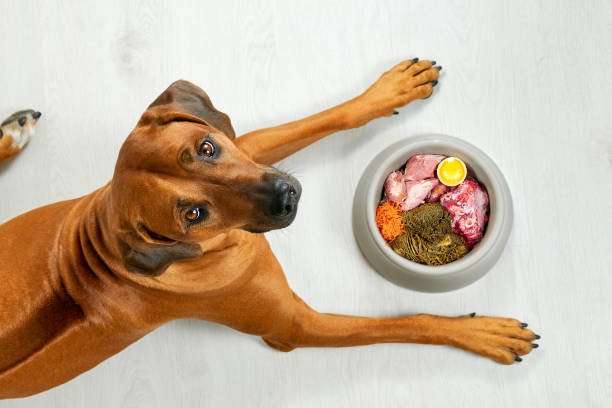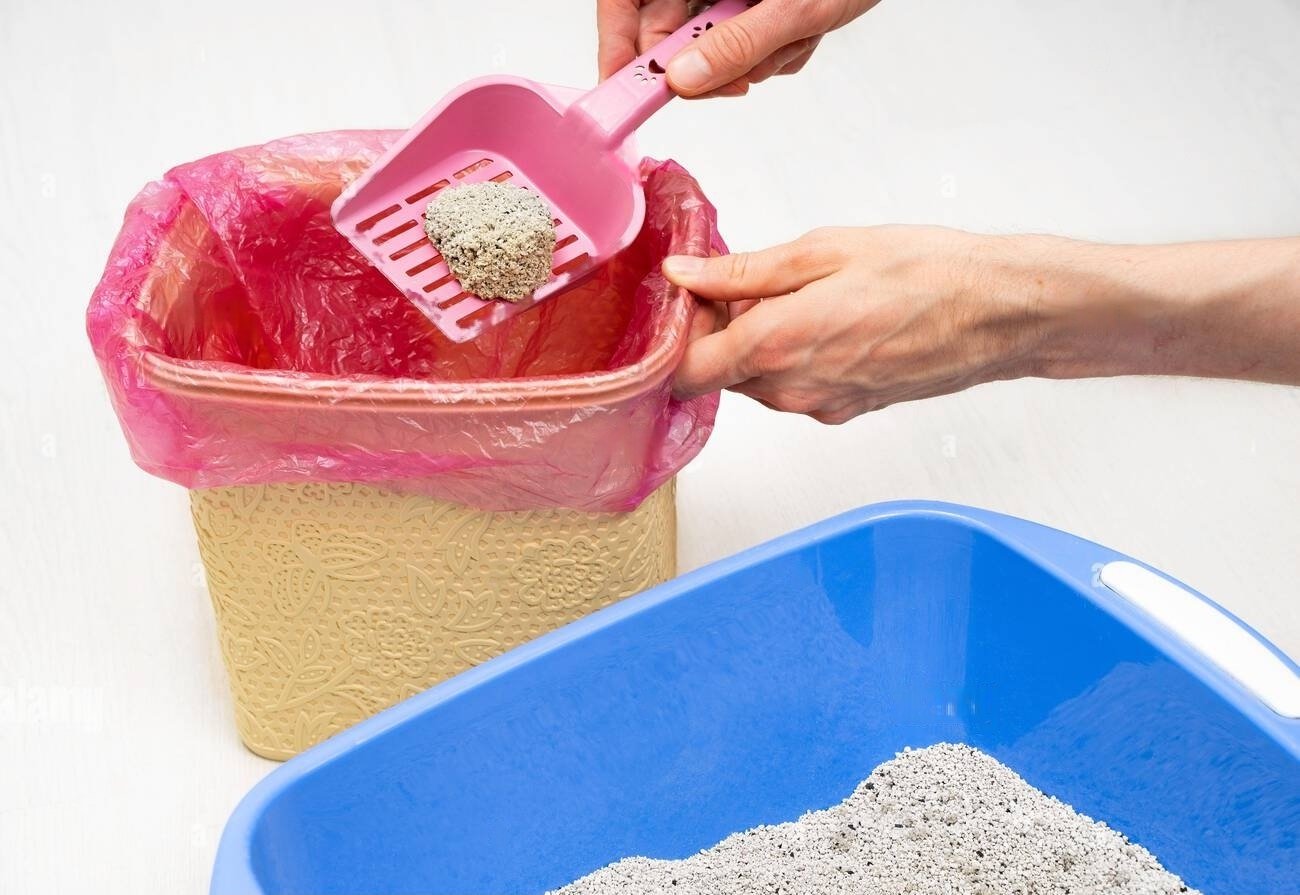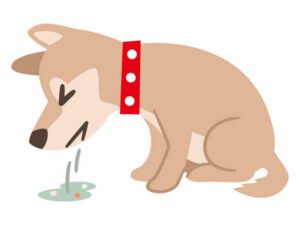Chocolate is a delicious treat for us, but it can be very dangerous for our furry friends. Dogs metabolize certain chemicals in chocolate, like theobromine and caffeine, much more slowly than humans do. This means that even a small amount of chocolate can be toxic to them, potentially leading to serious health issues such as vomiting, diarrhea, rapid breathing, increased heart rate, and even seizures.
When your dog eats chocolate, it’s important to act quickly. The sooner you take the right steps, the better chance you have of preventing serious harm. Don’t worry—this guide will walk you through everything you need to know to help your dog safely. Let’s get started on how to make a dog throw up after eating chocolate!
Symptoms of Chocolate Poisoning in Dogs
Recognizing the symptoms of chocolate poisoning in dogs is crucial for taking swift action. Here are the common signs to watch for:
- Vomiting: One of the earliest and most common signs. Your dog may start to vomit within a few hours of consuming chocolate.
- Diarrhea: Chocolate can cause gastrointestinal upset, leading to diarrhea. This symptom often accompanies vomiting.
- Increased Thirst and Urination: The caffeine in chocolate acts as a diuretic, causing your dog to drink and urinate more frequently.
- Rapid Breathing: Theobromine, a chemical found in chocolate, can stimulate the heart and respiratory system, leading to fast or labored breathing.
- Increased Heart Rate: Chocolate poisoning can cause your dog’s heart rate to soar, which can be particularly dangerous.
- Restlessness and Hyperactivity: Your dog may become unusually restless, anxious, or hyperactive due to the stimulants in chocolate.
- Tremors and Muscle Rigidity: In severe cases, chocolate can cause muscle tremors or stiffness.
- Seizures: If a large amount of chocolate is consumed, or if the dog is very sensitive, seizures can occur. This is a serious symptom requiring immediate veterinary attention.
- Weakness and Collapse: Extreme cases can lead to weakness, lethargy, or even collapse.
- Coma: In the most severe cases, untreated chocolate poisoning can lead to coma or even be fatal.
What to Do If You Notice These Symptoms?
If you observe any of these symptoms and suspect your dog has eaten chocolate, contact your veterinarian or an emergency pet clinic right away. The quicker you respond, the better the chances of a full recovery for your dog.
Immediate Steps to Take
When you discover that your dog has eaten chocolate, it’s essential to act quickly and methodically. Here’s what you should do right away:
1. Remove Your Dog from the Source of Chocolate
The first step is to ensure that your dog cannot eat any more chocolate. Remove any remaining chocolate from their reach and secure the area. This prevents further ingestion and allows you to focus on what needs to be done next.
2. Check the Quantity and Type of Chocolate Ingested
Different types of chocolate have varying levels of theobromine and caffeine, toxic substances for dogs. Here’s a quick overview:
- Dark Chocolate: Contains the highest levels of theobromine and is the most toxic.
- Milk Chocolate: Less theobromine than dark chocolate, but still dangerous in significant amounts.
- White Chocolate: Contains very little theobromine, but can still cause problems due to its fat and sugar content.
Estimate how much chocolate your dog has eaten and note the type. This information will be crucial for your veterinarian to assess the severity of the situation.
3. Contact Your Veterinarian for Advice
Immediately reach out to your pet’s healthcare provider or visit a veterinary emergency center. Provide them with detailed information about:
- The type of chocolate consumed.
- The estimated amount consumed.
- Your dog’s size, weight, and breed.
- Any symptoms your dog is exhibiting.
Your veterinarian will advise you on the next steps, which may include inducing vomiting, bringing your dog in for an examination, or administering activated charcoal to prevent further absorption of toxins.
How to Make a Dog Throw Up After Eating Chocolate
When to Induce Vomiting
Inducing vomiting can be an effective way to prevent chocolate poisoning, but it’s crucial to know when it’s appropriate. You should consider inducing vomiting if:
- Your canine has ingested chocolate within the last two hours.
- Your veterinarian advises it based on the type and amount of chocolate consumed.
- Your dog is not showing severe symptoms such as seizures, loss of consciousness, or extreme distress.
Do Not Induce Vomiting If:
- Your dog has ingested a sharp object or caustic substance along with the chocolate.
- More than two hours have passed since the chocolate was consumed.
- Your dog is unconscious, having seizures, or having difficulty breathing.
Hydrogen Peroxide Method
The most commonly recommended method for inducing vomiting in dogs at home is using 3% hydrogen peroxide. This method is generally safe and effective when used correctly. Make sure to seek advice from your animal doctor prior to trying this.
Dosage:
- Administer 1 teaspoon (5 ml) of 3% hydrogen peroxide per 5 pounds (2.27 kg) of body weight.
- Do not exceed 3 tablespoons (45 ml) regardless of your dog’s size.
Procedure:
- Measure the Correct Dosage: Calculate the appropriate amount of hydrogen peroxide based on your dog’s weight. For example, a 25-pound dog would require 5 teaspoons (25 ml).
- Administer Using a Syringe or Turkey Baster: Use a syringe (without a needle) or a turkey baster to administer the hydrogen peroxide. Carefully squirt the liquid into the back of your dog’s mouth, near the throat, to ensure they swallow it.
- Wait 10-15 Minutes: After administering the hydrogen peroxide, wait and observe your dog. Most dogs will vomit within 10-15 minutes. Keep your dog moving around to help stimulate vomiting.
- Repeat Once if Vomiting Doesn’t Occur: If your dog does not vomit within 15 minutes, you can give one more dose of hydrogen peroxide. Do not repeat more than once. If vomiting still does not occur, contact your veterinarian immediately.
Risks and Precautions
- Overdose Risks: Administering too much hydrogen peroxide can cause severe irritation to your dog’s stomach and esophagus, leading to additional health problems.
- Foreign Objects: If your dog has eaten something sharp or caustic, inducing vomiting can cause further damage.
- Underlying Health Issues: Dogs with certain health conditions (e.g., respiratory issues, megaesophagus) should not be induced to vomit.
Veterinary Alternatives
If you are unable to induce vomiting or if your veterinarian advises against it, they may use other methods such as:
- Activated Charcoal: To prevent further absorption of toxins.
- IV Fluids and Medications: To support your dog’s health and expedite toxin elimination.
Importance of Veterinary Guidance
Always seek professional advice before inducing vomiting. Your veterinarian can provide the best course of action based on your dog’s specific situation, ensuring the safest and most effective treatment.
How to Induce Vomiting in a Dog Who Ate Grapes
If your dog has eaten grapes, which are toxic, inducing vomiting can help remove them from their system. To do this, use 3% hydrogen peroxide, giving one teaspoon per 5 pounds of body weight, but no more than 3 tablespoons. Administer it orally with a syringe or turkey baster. However, it’s crucial to contact your veterinarian first for the correct dosage and guidance. If your dog doesn’t vomit within 15 minutes, or if you’re unsure about inducing vomiting, seek immediate veterinary assistance. Do not attempt this if your dog is unconscious, having seizures, or showing signs of distress.
Risks and Precautions
Inducing vomiting in dogs should always be approached with caution and consideration of specific circumstances. Firstly, never attempt to induce vomiting if your dog is unconscious, experiencing seizures, or showing signs of severe distress. In these situations, the risks of further complications, such as aspiration of vomit into the lungs, outweigh any potential benefits.
Additionally, the effectiveness of inducing vomiting diminishes significantly if more than two hours have passed since your dog consumed chocolate. Theobromine and caffeine, the toxic components in chocolate, are rapidly absorbed into the bloodstream during the initial hours after ingestion. Beyond this window, vomiting may no longer be effective in preventing the absorption of these substances. Instead, contact your veterinarian immediately for guidance on alternative treatments, such as activated charcoal, which can help bind and neutralize toxins in the stomach.
It’s crucial to use 3% hydrogen peroxide only and measure the dosage accurately when attempting to induce vomiting. Higher concentrations can cause severe gastrointestinal irritation or injury. Avoid using alternative substances such as salt or syrup of ipecac, as these can be toxic and pose additional health risks to your dog.
After inducing vomiting, closely monitor your dog for any adverse reactions or persistent symptoms. Offer fresh water to keep them hydrated and observe their behavior closely.
Alternative Methods (Only if Recommended by a Vet)
In cases of chocolate ingestion, veterinarians might recommend using activated charcoal. This substance can help prevent further absorption of toxins into your dog’s system by binding to the toxic compounds in the chocolate. However, it’s crucial to use activated charcoal only under the guidance of a veterinarian, as improper use can lead to other health issues. Other home remedies might be mentioned in various sources, but it’s important to approach these with caution. Always seek professional advice before attempting any home treatment, as incorrect methods could exacerbate the problem.
What to Do After Inducing Vomiting in Dog
After initial treatment, closely observe your dog for any ongoing symptoms of chocolate poisoning. These symptoms can include restlessness, rapid breathing, vomiting, diarrhea, and increased heart rate. It’s important to keep your dog adequately hydrated, as lack of water can exacerbate the condition. If your dog has experienced vomiting, provide a bland diet such as boiled chicken and rice to soothe their stomach. Gradually reintroduce their regular food as they recover.
When to See a Veterinarian
Certain symptoms and scenarios necessitate immediate veterinary care. Seek professional help if your dog exhibits severe symptoms like seizures, extreme hyperactivity, or an elevated heart rate. The size of the dog and the amount of chocolate consumed also play a critical role; small dog breeds are particularly vulnerable, and large amounts of chocolate can be fatal. If you’re uncertain about the seriousness of the condition, promptly reach out to your veterinarian.
Preventing Future Incidents
Prevention is key to avoiding future chocolate-related emergencies. Keep all chocolate products out of your dog’s reach, including in places where they might accidentally access them, such as countertops or bags. Educate family members and guests about the dangers of chocolate for dogs and the importance of not leaving chocolate unattended. Additionally, consider pet-proofing your home by using child locks on cabinets or storing chocolate in high, inaccessible areas.
Conclusion
Quick action and seeking veterinary advice are paramount when dealing with chocolate ingestion in dogs. Early intervention, including knowing how to make a dog throw up after eating chocolate, can prevent serious health complications and ensure your dog’s safety. Sharing this information with other dog owners can raise awareness about the dangers of chocolate and help protect more pets from accidental poisoning. Keep in mind, that taking additional precautions and caring for your pet’s health is always valuable.
FAQ’s
- How long after eating chocolate can I induce vomiting?
If your dog has ingested chocolate, inducing vomiting can be effective if done within two hours of consumption. However, such actions should be taken only with a veterinarian’s advice. The vet may recommend using hydrogen peroxide to induce vomiting, but it’s crucial to get the correct dosage based on your dog’s size and weight.
- What if my dog ate dark chocolate?
Dark chocolate is more toxic to dogs than milk chocolate because it contains higher levels of theobromine and caffeine, the substances responsible for chocolate toxicity. If your dog has eaten dark chocolate, contact your veterinarian immediately, regardless of the amount. Symptoms can include vomiting, diarrhea, increased heart rate, and even seizures. Prompt medical attention is vital.
- How much chocolate is toxic to dogs?
The harmful effects of chocolate on a dog vary based on the chocolate’s variety, the quantity ingested, and the dog’s size. Dark chocolate and baked chocolate are highly toxic even in small amounts, while milk chocolate requires a larger quantity to cause harm. For example, as little as 20 grams of dark chocolate can be dangerous for a small dog weighing 5 kilograms (about 11 pounds).
- What are the symptoms of chocolate poisoning in dogs?
Symptoms of chocolate poisoning can vary but often include vomiting, diarrhea, rapid breathing, increased heart rate, restlessness, muscle tremors, and seizures. If your dog exhibits any of these symptoms after consuming chocolate, seek veterinary assistance immediately.
- Can small amounts of chocolate harm my dog?
Even small amounts of chocolate can be harmful, especially for small breeds. While a tiny bit might not cause severe symptoms, it’s best to avoid giving any chocolate to your dog. Over time, even small amounts can accumulate and lead to health issues.
- What should I do if my dog eats chocolate but seems fine?
Even if your dog appears fine after eating chocolate, it’s still essential to monitor them closely for any delayed symptoms. Contact your veterinarian for advice. They might recommend inducing vomiting or other precautionary measures based on the type and amount of chocolate consumed.
- What if my dog doesn’t throw up after hydrogen peroxide?
In the event that your dog does not vomit post-hydrogen peroxide treatment, avoid giving a second dose. Contact your veterinarian immediately for further instructions. They may suggest alternative methods or recommend bringing your dog in for professional care.
- My dog ate one grape, should I worry?
Yes, you should be concerned if your dog ate one grape. Grapes can be toxic to dogs and may cause kidney failure, even in small amounts. It’s advisable to promptly get in touch with your vet for guidance. Monitoring your dog for symptoms such as vomiting, diarrhea, lethargy, or decreased appetite is also important.
Check out our recent article.























